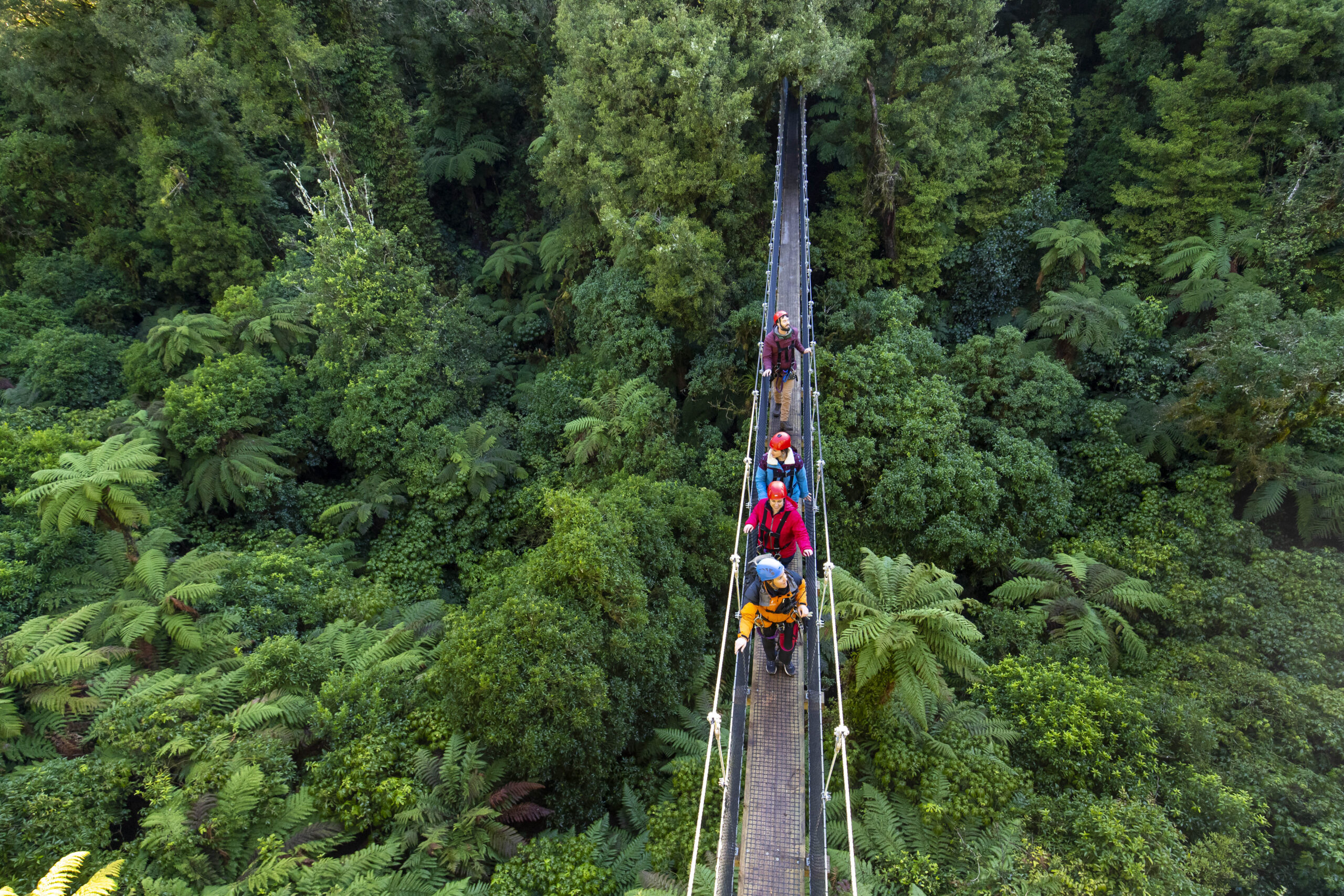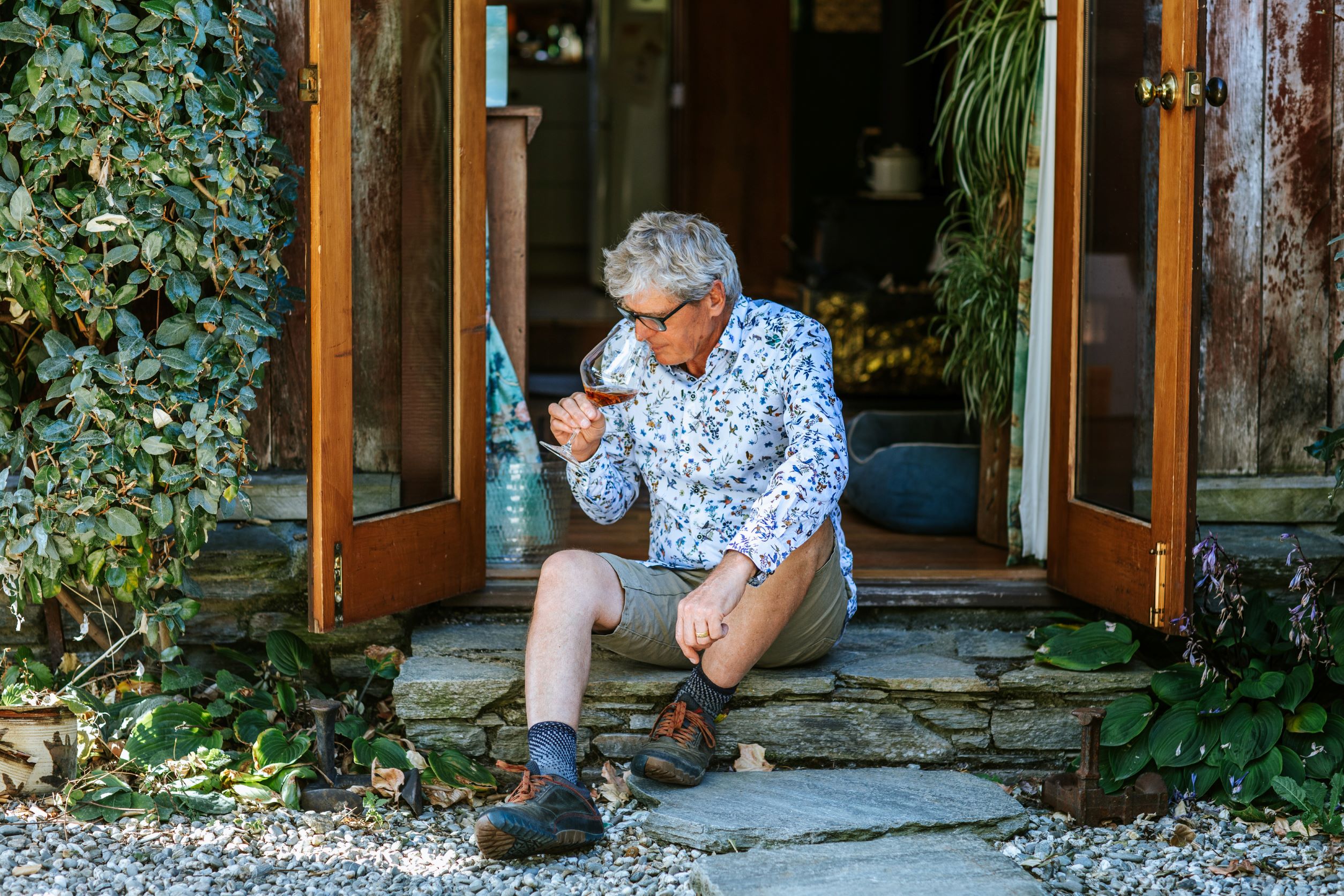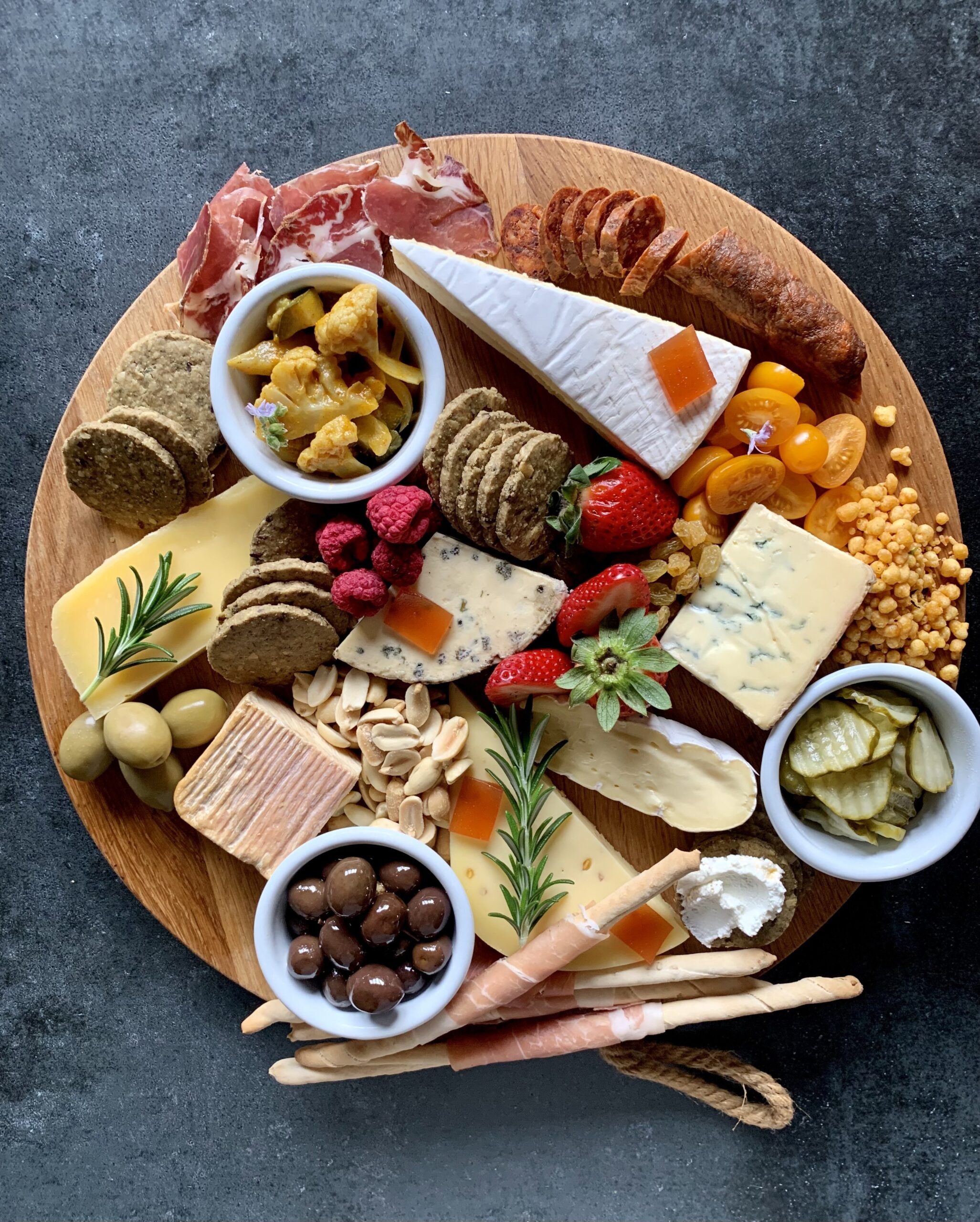Rotorua Canopy Tours have just launched a second adventure tour and it’s epic
Words Georgina Harris
Not far from Rotorua, the Dansey Road Scenic Reserve feels like a step back in time with native birds flitting about and 1000-year old rimu trees casting shade. This is until the shrieks of happy customers on ziplines punctuate the air.
This reserve was overrun by predators such as possums and stoats until it became home to the country’s only native forest zipline – the original Rotorua canopy tour – in 2012. Since then more than 100,000 people have zipped and zapped through that tour, and in 2016, the company was awarded the Supreme Award at the New Zealand Tourism Awards.

Its second offering, the ‘ultimate’ tour – $219 for an adult and $189 for a child – opened a few weeks ago. It’s a three and a half hour tour with a total of 1200 metres of ziplines (the longest 400 metres long), three swingbridges, a 50-metre high cliff walk and ending with a controlled abseiling descent.
It’s exciting, and a great way to learn more about the stunning New Zealand wilderness as your two personal guides explain the story of the company’s conservation efforts in restoring the native forest.
Up and away
For co-founder and structural engineer, Andrew Blackford, there was no blueprint for this new tour, just his imagination.
“As a structural engineer who worked in the construction industry, you’re always constrained by other consultants, architects, project managers, time, budget but this time to have a blank canvas to do whatever we wanted. The only constraint we had was that we had was that we didn’t want to make it so long that people had to give up a whole day, so calculating from that governs how many features we had on the course.”
There were several learnings taken from the original tour, including a lot of the physical aspects, Blackford says.
“Such as what works best in terms of the gradient of the lines, how to maximise the natural features the best…we found out pretty quickly that flat, boring terrain is pretty hard to build a zip line on.”
He says the planning and build started in earnest when he quit his structural engineering job in June last year.

“It was two to three months of planning, design, getting paperwork together, putting it in for consent around October. We had a month build prior to Christmas – with myself and some of the guides helped out, and we had some external contractors involved too, but I’d say 75 percent of it was built by ourselves.”
The team used drones and helicopters to get the work done, spending a considerable amount of money this time on helicopters,” says Blackford.
“We’d cut a little clearing, winch it all in from the helicopter, and haul it up the tree – that was the main logistical challenge aside from the challenges from weather.”
He says the big issue this time was that they didn’t want helicopters buzzing around when people were using the original course, meaning lots of early starts and then back again in the evenings after tours had finished.
“I was the only designer involved, just me, doing the engineering and drawings. [There were] three core people in the build but that could get up to 10 to 12 depending. When that happened, I was more of a project management role but when it was just the three of us, we’re on the tools.”
The design of the course is quite progressive, Blackford says, starting on the ground, working your way up and you’ve always got the feeling of the trees around you.
“I feel the original course is a bit disjointed compared to the ultimate one…in terms of the evolution that’s what I’m most satisfied with.”

He says in terms of engineering, the cliff walk is the coolest part.
“Just the vision coming to life, seeing that outcrop initially from the helicopter and thinking how we could do that. The second bridge that goes straight off the platform is also awesome – that’s the first time I’ve designed and built a bridge, the incline [on the bridge] is something a bit different.”
The ultimate course was scope extension to Canopy Tours’ existing concession agreement with the Department of Conservstion (DoC), says Blackford, so the team had to liaise with, and keep DoC and local iwi Te Arawa, on board. Rotorua Lakes Council were also involved from a regulatory point of view, both with building consents and resource consents.
Blackford adds that the ziplines are a mechanism or transport option to get people in, but the selling point is the guided, personalized experience.
“The zipline and the features are the hook to pull you in the door but the memories is all about the education and the story.”
For co-founder and general manager James Fitzgerald, the biggest challenge faced so far for the ultimate course is to do with creating and marketing the premium experience.
“In a town like Rotorua where the local tourist market is predominately dominated by mass tourism dominated attractions, a product for $220 is completely outside the range of what has been accepted in the past here…if you are comparing [it] with somewhere like Queenstown it’s quite comparable to an experience down there, but it’s new territory for Rotorua.”
The new course is suitable for 10 years plus, compared with the original course which allows six years-olds and over, a change made as the team found that age is linked to attention span.
“If the child is too young they get distracted and it’s a real detraction if the kid starts to get bored… there’s a bit of a business reason too, we’ll try and push the younger families on to the original, cheaper course,” says Blackford.
Another reason the team decided to do a second course was to ensure capacity for the hordes of tourist and Kiwis wanting to have a go, with tours booking up to 10 days in advance. Fitzgerald says for those taking part, 60 percent are international visitors with 40 percent New Zealanders.
Both Blackford and Fitzgerald press on how important the guides are to the experience, and speak highly of each of the team. There are around 20 guides over winter, which doubles during the summer period.
Conservation nation
An integral part of Rotorua Canopy Tours ethos is ensuring the conservation of the native forest. Administered by the Canopy Conservation Trust, the team manage all the conservation.
Fitzgerald explains that DoC gave Canopy Tours a “head start”, signing a partnership in 2015 that stipulated that part of the money for its rental agreement, the rent for using the land, went back into the conservation trust.
“We were struggling to maintain the conservation and get enough headwind with it. Our rent is based on business performance so the better the business does the more we owe DoC – we spoke to them and said maybe there’s an opportunity for some of it to remain with us and we’ll put it into a separate charitable trust and we’ll match it dollar for dollar and it’ll give us twice the horse power for our conservation efforts.”
These efforts have paid off with more than $300,000 contributed to the restoration, but challenges continue for the team.
“You make big gains and staying on top of those gains is really important,” says Fitzgerald. “The bigger the area gets, the more resources and time is required. We’ve been really lucky with our timing that Kiwi business like Goodnature almost came of age when we were looking for something.”
Currently, there are about 650 Goodnature traps in the reserve. One example is Goodnature’s A24 self-resetting trap which can kill up to 24 rats, mice and stoats per compressed CO2 canister.
Providing a different experience
With the experience an opportunity to challenge your comfort zone and to step away from the world for a few hours, Fitzgerald says the ultimate tour definitely offers something a little different to locals and international tourists alike.
“It’s a bit more premium, a different message than most, and ultimately the forest is better off. It’s about putting a stake in the ground. We’re saying hey, this is our attempt to make, hopefully, over time as we hone our story and as the forest recovers, one of the best canopy tour experiences in the world.”
This article was first published at idealog.co.nz







